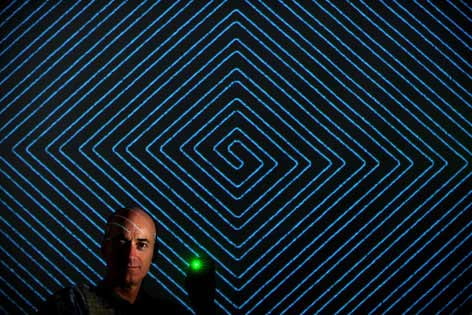Solar energy center aids product development
UC Irvine scientists believe sunlight is the fuel of the future.

UC Irvine scientists believe sunlight is the fuel of the future.
UCI launched its Center for Solar Energy in 2007 with a $3.9 million gift from the California Community Foundation. The center, in the School of Physical Sciences, blends biology, chemistry, physics and engineering to find new, better ways to turn solar energy into useable chemical and electrical energy.
Chemists Reg Penner, John Hemminger, Matt Law and Alan Heyduk are leading UCI’s solar energy research efforts. Penner, center director and chemistry professor, discusses solar energy and how UCI is making an impact:
Q: What is the potential of solar energy, given society’s wish to conserve?
A: The amount of energy supplied to the Earth from the sun is astronomical. In just one hour, energy supplied by the sun exceeds the total amount of energy consumed by humans over an entire year. This inexhaustible energy source is all around us, but it is expensive to harness, so we use very little of it. For solar energy to compete with fossil fuel-based power, genuine breakthroughs at the fundamental science level in how we convert solar energy into electricity must occur.
Q: How is UCI contributing with the Center for Solar Energy?
A: The Center for Solar Energy looks for bottlenecks in the fundamental science underlying emerging technologies such as solar-thermal, solar cells, and the catalysis of photochemical water splitting. Ideas under investigation by center scientists include:
- Designing molecules to absorb light and, using its energy, disassembling water into hydrogen and oxygen gas.
- Creating efficient solar cells from earth-abundant, nontoxic, and environmentally friendly materials including metal oxide particles and plastics.
- Harnessing the sun’s heat to directly generate electrical power using materials called thermoelectrics.
- Using nanoparticles to focus and concentrate sunlight, increasing the efficiently of photovoltaics.
Q: What is unique about UCI’s solar energy program?
A: We work on the first step of the product development cycle. Scientists at the Center for Solar Energy focus exclusively on fundamental science. We are discovering new ways to make materials that can more efficiently collect sunlight and convert it to useable energy – new principles for converting sunlight into energy. When our discoveries are processed by engineers, the result will be the next generation of cheaper, more efficient solar panels.
Q: What are your hopes for the future of solar energy?
A: Our objective is for alternative energy sources of all types to replace fossil fuel-fired power by 2050. Solar energy will need to play the leading role in order to achieve this ambitious goal.